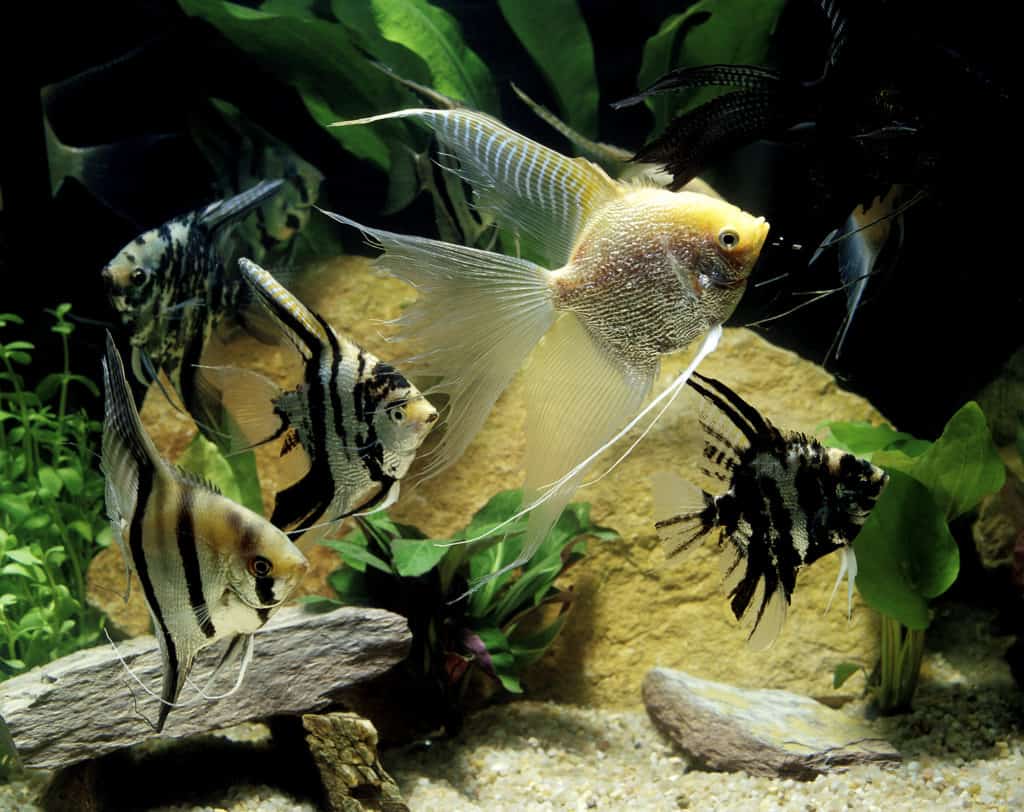
There comes a time in every aquarist’s life where they may unexpectedly find themselves with lots of little fry swimming around a community tank.
It can be a bit of a shock to find yourself with so many fish, but then you might think to yourself that there could be a lot of money in raising and selling fry.
You’d be right! Breeding fish professionally can be an interesting career, well worth the time.
It’s just a matter of knowing how to get started.
Thankfully, some fish are easier to breed than others, and you may already have a pair or two right under your nose.
We have a list of the top 20 easiest fish to breed right here, so without further delay, let’s get right into our list.
Top 20 Easiest Fish to Breed

1. Guppies
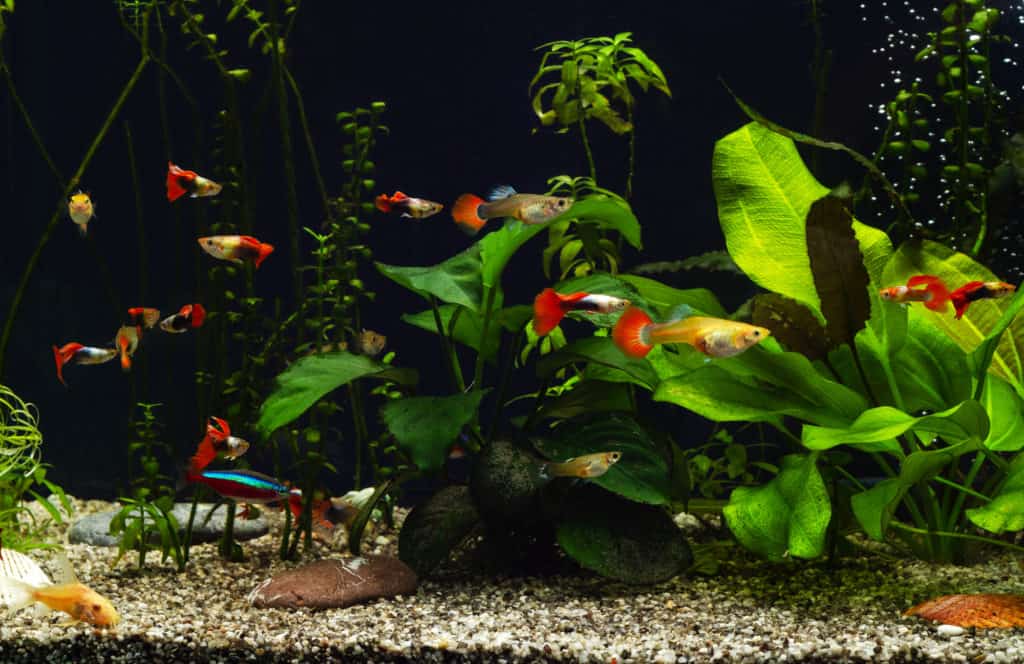
Guppies are one of the most popular fish to breed.
They’re easy to care for, rapid breeders, and a ton of fun to watch.
They don’t really need special conditions to breed.
They just need to be left on their own, and they will take care of the rest.
However, they do need the right tank size and filtration.
All you need to breed guppies is a clean environment, and a male and female guppy.
Plus, the fry are born fully formed and capable of caring for themselves.
The parents don’t really have a hand in raising the fry at all.
Guppies mature rather quickly and will reach their adult stage when they’re about six months old.
2. Mollies
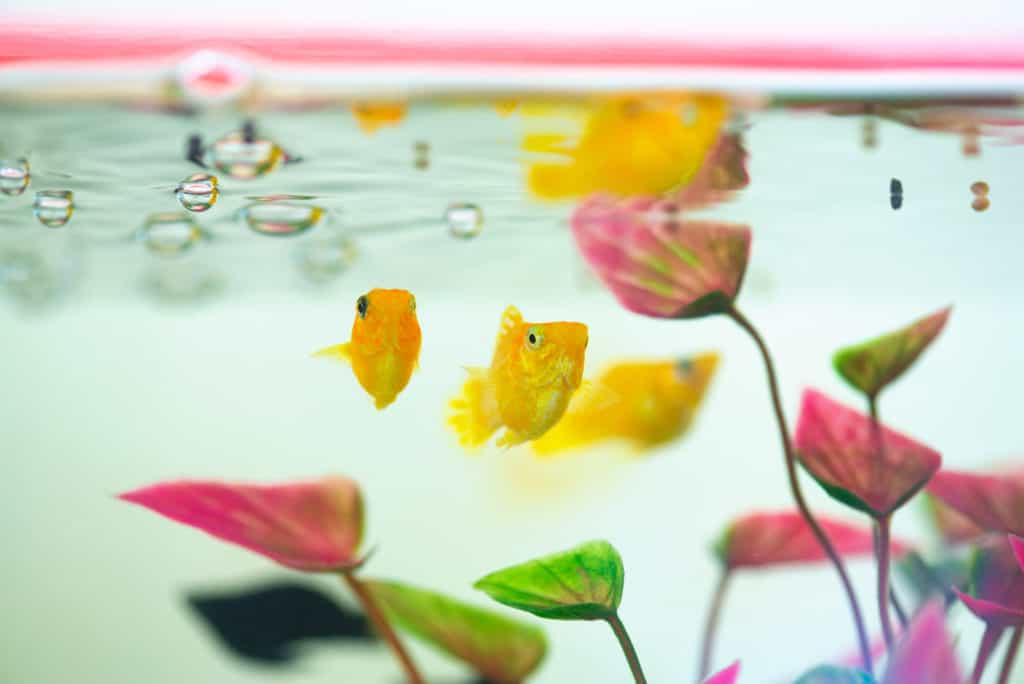
Another easy to breed fish is the Molly.
Mollies are live breeders—meaning they don’t lay eggs—and female mollies can give birth to up to over a hundred babies in a single live birth.
To get your Mollies to breed, you’ll want a single male for multiple females, and to have a nursing tank ready for your female when she falls pregnant.
The female will give birth to her babies about three to five weeks after copulating.
Once she does, it’s important to keep the babies away from their parents. Mollies often eat their own young.
3. Ameca Splendens

Another species that is, for one reason or another, not as popular nowadays is the Ameca Splendens.
These fish, also known as the Butterfly Splitfins, have very simple breeding requirements.
They have a breeding method similar to live-bearers, with the fry being born attached to something like an umbilical cord six to 10 weeks after the fish mate.
The fry have a very high survival rate, so it’s important to know what you’re going to do with them when they’re born.
Even the largest of tanks can become overrun very quickly.
4. Platies
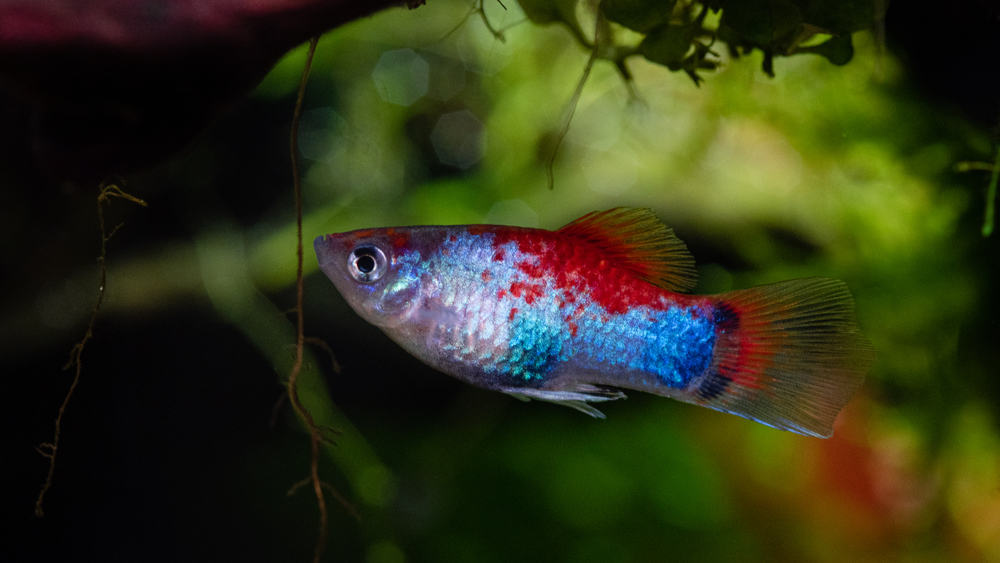
Platies are certainly up there when it comes to being easy to breed.
They are almost as easy as Guppies.
There’s just a single snag: they tend to hunt and eat their fry after they’re born.
While it’s easy to get them to breed, it’s not as easy to help the fry to survive.
After your female is pregnant, she should be placed in a nursing tank or left in a breeding tank until the babies are born, then removed so the fry can live and grow without the risk of being eaten.
5. Anableps

If you’re out to breed some fish on the larger side, Anableps are for you.
While Anableps aren’t exactly a difficult fish to breed, they do have a very unique way of mating.
Their organs are only on one side of their body, either the left or the right.
This means that left-sided females can only mate with right-sided males.
While you need a good amount of both males and females, you’ll also have to make sure they match up physically.
Breeding or nursing tanks are highly recommended for them, as they can tend to be aggressive when they’re about to give birth.
6. Zebra Danios

Another gorgeous, easy-to-breed fish are Zebra Danios.
They’re great for novice breeders.
All they really need is a good breeding tank and the right conditions.
They should have their own breeding tank where they should be housed throughout the birthing process, as well.
They should lay their eggs in their breeding tank, and then be removed and placed back in their regular tank.
Their breeding tank should be about 10 gallons and in the lower 70s, temperature-wise.
After leaving the matured Zebra Danios in their tank for two weeks, you should start to see the females develop distended stomachs.
7. Swordtails

Swordtails are another beautiful live breeder that doesn’t have a lot of requirements.
All you really have to do is have a mature male and female in the same tank.
There should be a ratio of three females per male in your tank.
However, we must recommend putting them in a breeding tank because of their habit of eating their fry, like many other fish do.
If you decide not to put them in their own breeding tank, that’s also fine.
Just be sure to stock their tank with a lot of thick vegetation so the fry have a good amount of space to hide.
8. Rosy Red Minnows

Also known as the Tuffy, the Fathead Minnow, and the Blackhead Minnow, Rosy Red minnows make great pets and breeders.
They mature at about 12 months of age and grow up to about two to four inches in length.
They should be housed in a breeding tank until the eggs have hatched, then removed before they’ve had a chance to feed on their young.
Female Rosy Red Minnows can lay hundreds of eggs at a time, so be prepared to have a lot of fry on your hands.
9. Firemouth Cichlids
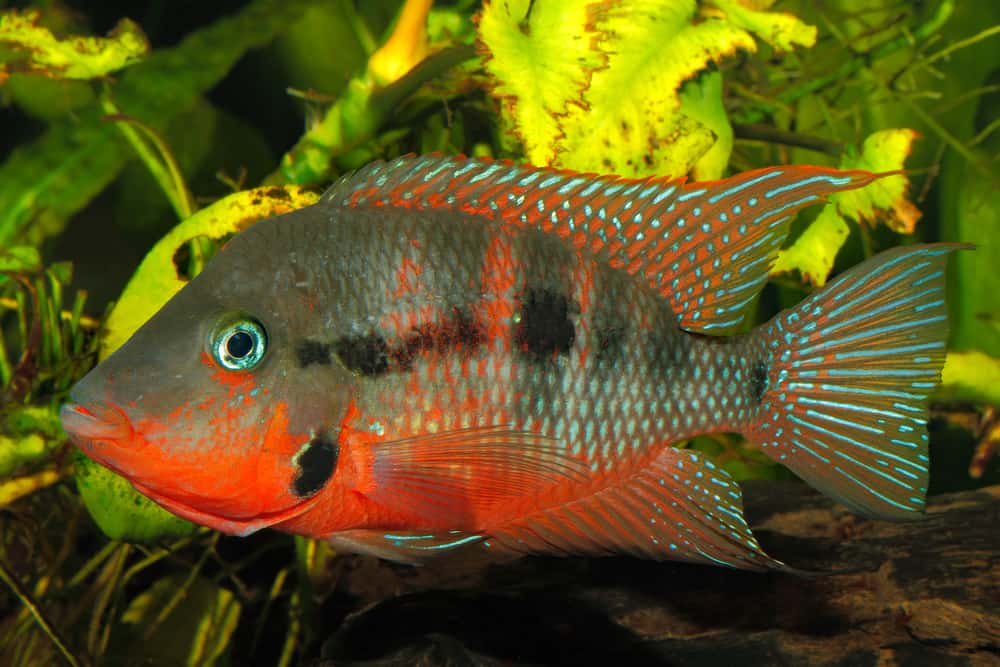
Another slightly larger species that make fantastic breeders are Firemouth Cichlids.
They don’t have a lot of requirements for breeding.
They should be kept in a 50-gallon tank, and multiple pairs should be raised together so they can couple up as adults.
They don’t need to be kept in a special breeding tank.
They will look after their fry instead of eat them.
The fry will stay with their parents for around three weeks.
10. Kribensis Cichlids
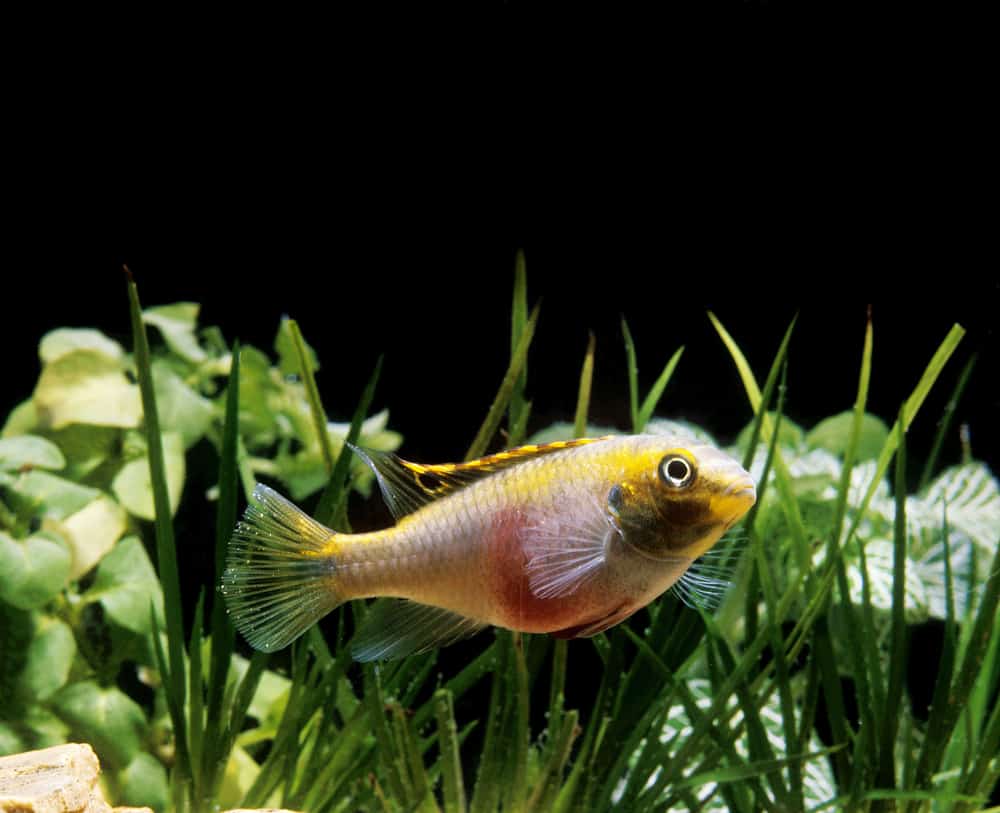
Another Cichlid we just had to include on this list are Kribensis Cichlids.
Also known as the P. Pulchers, they’re excellent, simple breeders.
These fish need a cave to be able to breed.
This is where they will lay their eggs.
Once they’ve hatched, the parents will work together to protect their fry and guide them for the first month of their lives before driving them away so that they may begin to breed again.
11. Rosy Barbs
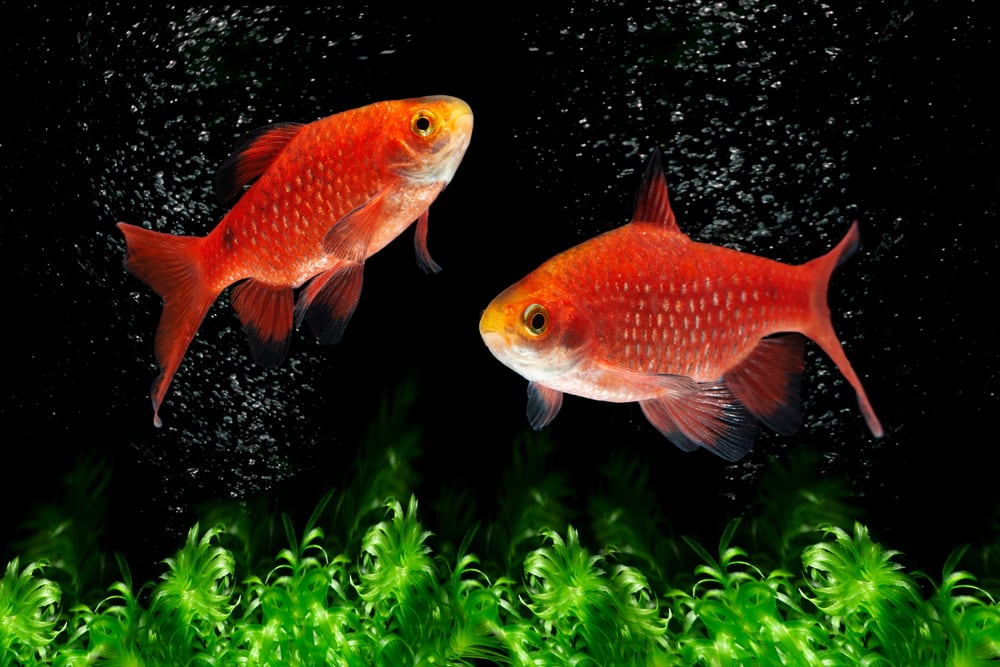
Rosy barbs are pretty fish that are very easy to breed.
They reach maturity when they’re about 2.5 inches long, which won’t take them very long at all.
These are another species that need a breeding tank in order to get the job done.
They only breed in water that is a few inches deep, with an abundance of plants.
You’ll know when your females are ready for breeding when their color changes and they become very vibrant.
The parents should be separated from their eggs because they will eat them before they even have a chance to hatch.
The fry should be raised in a tank larger than their parent’s breeding tank after they hatch 30 hours after their eggs are laid.
12. White Cloud Mountain Minnow
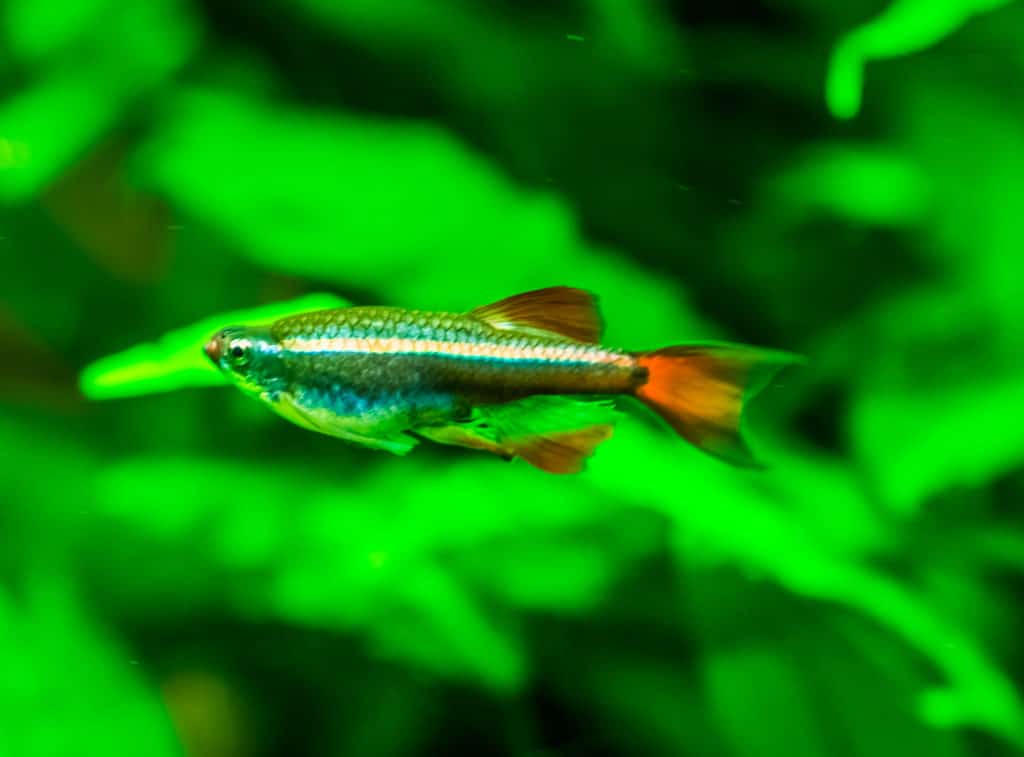
If you’re looking to breed colorful fish that come together in a beautiful, graceful school, you should consider breeding White Cloud Mountain Minnows.
They have a few requirements for breeding, which are easy to meet.
You should set up a small breeding tank and house a couple of your most colorful males, as well as twice the number of females, inside.
The water should be soft, with a pH of 6.5 to 7.5, a water temperature of 68 to 72 degrees, and lots of plants.
If you choose to leave them in a community tank to breed, that should be fine as well.
Just know that not all of the fry will survive.
The parents, as well as other fish in the tank, may eat them.
13. Convict Cichlids
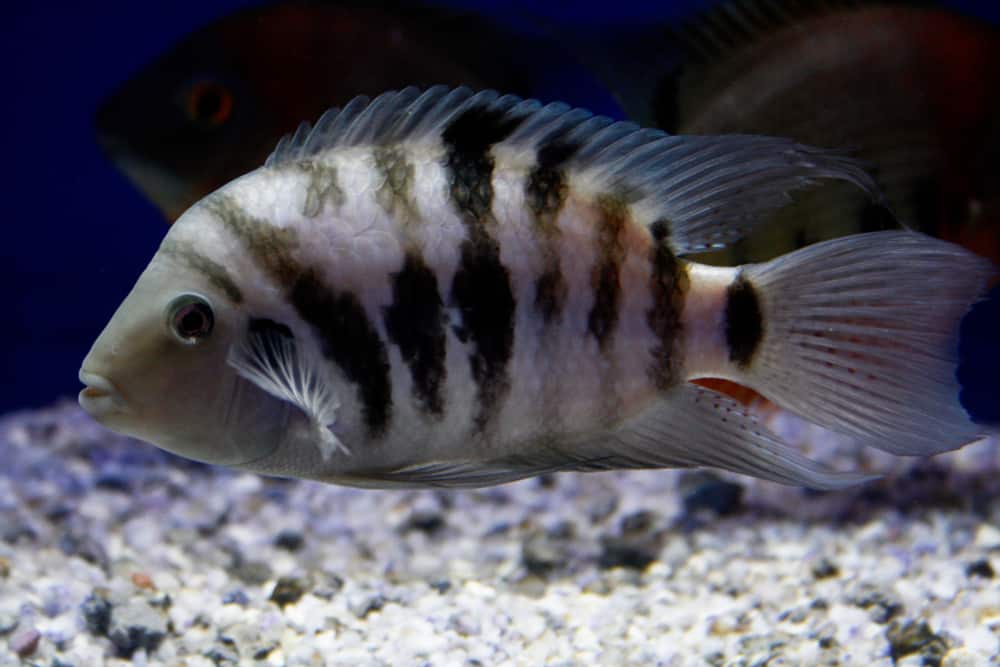
These cichlids are also easy breeders.
To get started, you should get them a breeding tank of at least 50 gallons, and refrain from housing breeding pairs in community tanks.
That will only lead to problems.
Once in their breeding tank, all you have to do is wait roughly four days.
After that point, you should expect to see about 30 convict fry!
These cichlids make great parents, with the exception of the father, who can become aggressive towards the fry after they leave their yolk sac behind and swim on their own.
14. Killifish

Killifish are stunning creatures, with their vivid colors and graceful swimming patterns sure to mesmerize anyone watching them.
They should have a breeding tank, like many others on this list, but it isn’t difficult to set up in the slightest.
Start by placing sand and peat moss in their breeding tank, putting your pair inside, and waiting for the female to lay her eggs in the sand and bury them.
Once the eggs have been laid, the parents should be removed from the breeding tank and put back in their original home.
You should provide the eggs with a warm, moist environment for three months.
Once three months have passed, you should fill the tank with water so the eggs can hatch.
The fry will eat their egg sac for a few days, graduating to other food after a few more days.
15. Endlers Livebearer
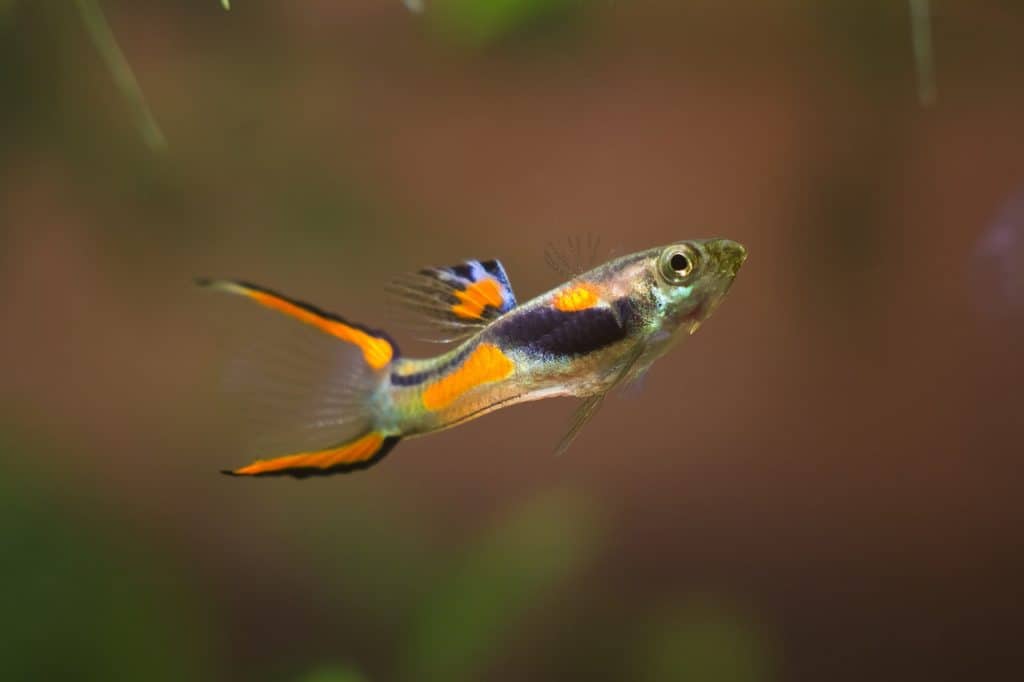
One great fish to breed for profit are Endlers Livebearers.
They’re gorgeous and are almost as active as guppies when it comes to breeding.
There are no special requirements that need to be met.
It’s as easy as acquiring a pair and leaving them in their tank.
You should have more females than males in their tanks.
A three-to-one ratio will probably work fine.
They’re such prolific breeders that you can expect new fry in your tank every 23 days or so.
It’s a good idea to raise their fry in a separate breeding tank, as their parents may cannibalize them, but if you choose to leave them in a regular tank, that should be fine, too.
Just make sure they have a lot of dense plants to hide in.
16. Corydoras
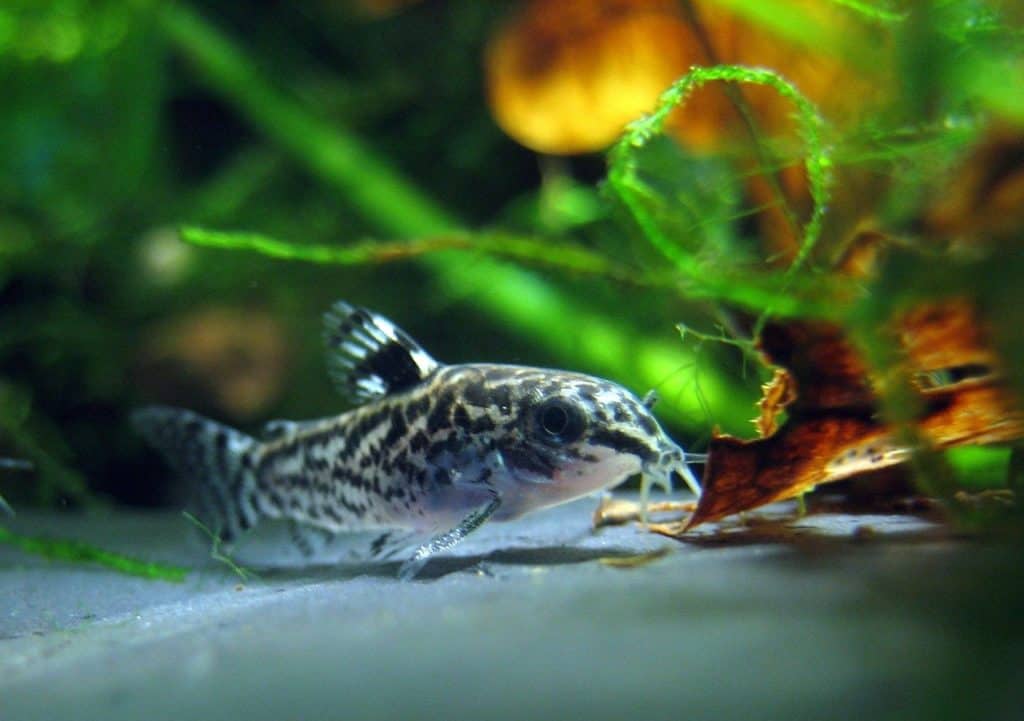
Corydoras are easy to breed, too!
Your fish should be over 12 months old, and at least 2.5 inches long before you attempt to breed them.
These are another species that will eat their own eggs, and they need to be taken out of their breeding tank as soon as the spawning session is over and the eggs have been laid.
To set up your Corydoras’ breeding tank, you need to make sure it’s fully cycled and not too fancy.
You should look for eggs on flat surfaces with moss on them, like flat rocks and such.
The eggs should hatch in three to five days, and you should see 15 to 20 Corydoras fry swimming around your tank!
17. Angelfish

Angelfish are beautiful, beloved fish that most aquarists have cared for at some point, and we’re thrilled to inform you that they’re not difficult to breed at all.
To get started, set up a freshwater tank for them to breed in.
The tank should be taller than it is long, have a pH of between 6.5 and 6.9, and a temperature of about 82 degrees.
Angelfish are typically fine in a broad range of conditions, but if you want a successful breeding pair, you’ll want to put together the ideal tank for your angels.
Once your angelfish have paired off, or you’ve purchased a breeding pair, you should put your pair in a breeding tank.
Be sure to give them their privacy and a breeding cone for the angels to lay their eggs on.
Once the fry have hatched after about 60 hours, the parents will look after them.
Just be sure to avoid stressing your angels, as they may eat their fry when under duress.
18. Bristlenose Catfish
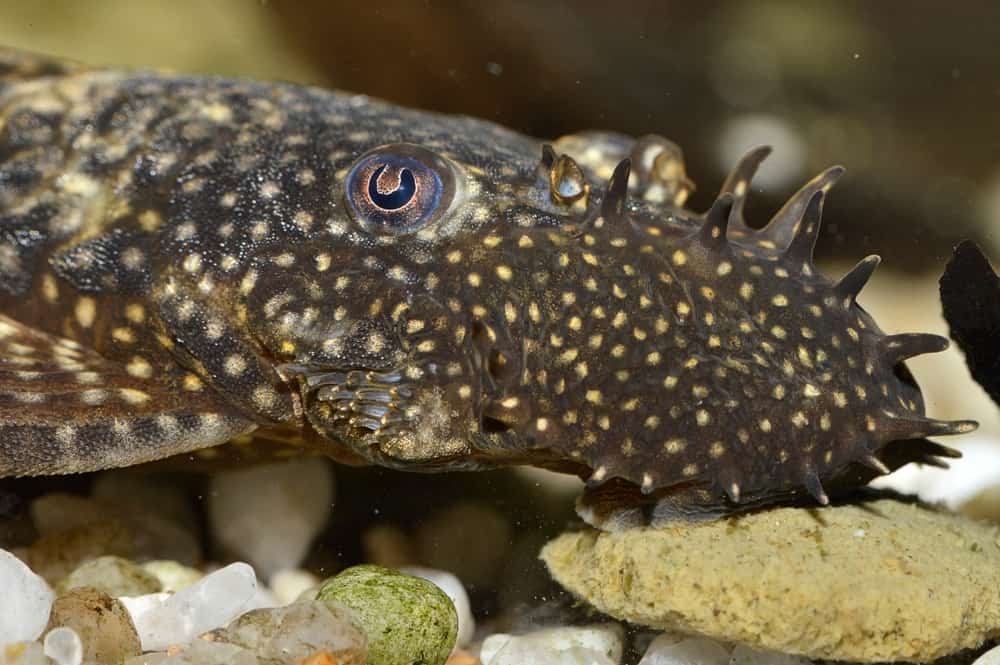
You might be shocked to learn that Bristlenose Catfish are easy breeders.
You’ll be even more surprised to learn that it’s as easy as pie to meet every requirement.
You’ll need a breeding tank for them, or at the very least, for the eggs and fry.
Their chance of survival in a community tank is extremely low, so be prepared to raise the fry elsewhere.
The parents will breed in the cooler months of winter in a tank with a lot of driftwood and caves.
The male Bristlenose will choose a cave as the spawning site and clean it in preparation for his partner’s eggs.
If the female is pleased with the cave, she will deposit her eggs, and the male will shoo her away so he can guard their eggs.
The eggs will take between four and 10 days to hatch and will attach to the side of the cave until they have absorbed their egg sac.
After two or four days, they will be free-swimming.
19. German Blue Rams
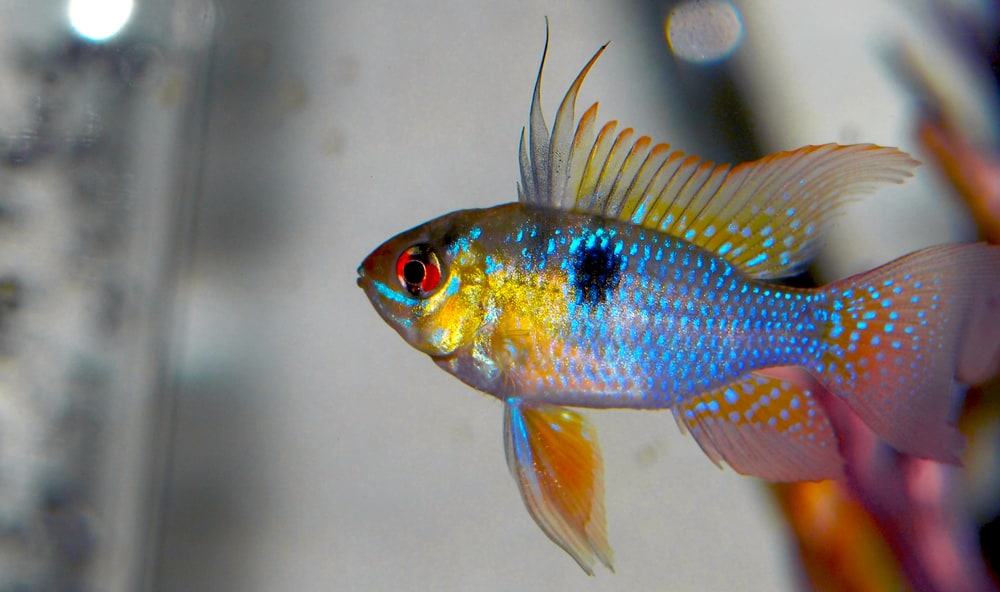
German Blue Rams are another easy breeder which take very little effort to prompt.
You can put them in a species-only breeding tank of no smaller than 10 gallons.
Our advice is to buy a group of about six to eight juveniles and let them pair off as they grow.
Your rams will breed in the open, on either leaves or large stones.
They can produce up 500 eggs at a time, and in order to allow for the maximum survival rate, the parents should be taken out of the breeding tank.
If they’re left inside, they will probably eat the eggs.
The fry should hatch about 60 hours after the eggs were laid, and they will be free swimming three to four days after that.
20. Gourami Fish
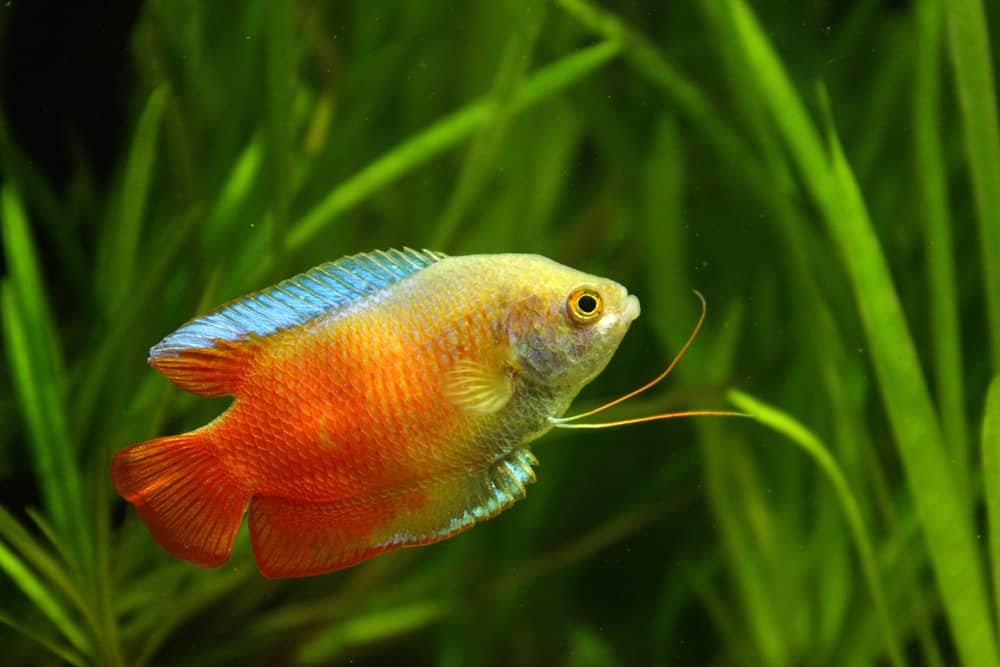
Gouramis will need a breeding tank, but before they’re moved there, you should give them both rich food for a week or two.
After that, they should be in their best breeding shape.
Once they’re both ready, move the female to the breeding tank, and let her settle in for a few days before you add the male.
You should wait for the female to be full of eggs before you introduce the male to her.
There are different breeding methods for different types of Gourami, so it’s best to do research on the type of Gourami you’re looking to breed before you begin.
Whatever the case, the eggs should hatch in about 24 hours, and the fry will remain close to their nest or mother for about three to five days before becoming free swimming and venturing out to explore the tank on their own.
How to Set up a Breeding Tank

With most of the fish on this list, you’ll need a breeding tank, but how do you set up something that will work for just about everyone?
The truth is that there isn’t a single method that will work for every fish, but there are guidelines you can follow and adjust to set up a tank which is just right for your fish.
The first thing you should do is make sure the temperature is just right and will encourage your fish to breed.
You should also keep a close eye on the water’s quality as well, making sure the pH balance and hardness don’t change too drastically too fast.
Any extreme change may shock and kill your fish.
You should also do research on where your fish like to spawn.
Will you need a breeding cone?
Are certain plants required?
Will they be happier with flat rocks or caves?
These are the kinds of questions you will have to answer to give your fish the best breeding environment possible.
You should also make sure you have a way of transferring the parents from the breeding tank and back into their usual tank regularly.
Since many fish tend to eat their eggs and their fry, a lot of times, the parents cannot stay where they have laid their eggs.
Having a safe way of moving the parents on hand is always a good idea.
The Start of Something New
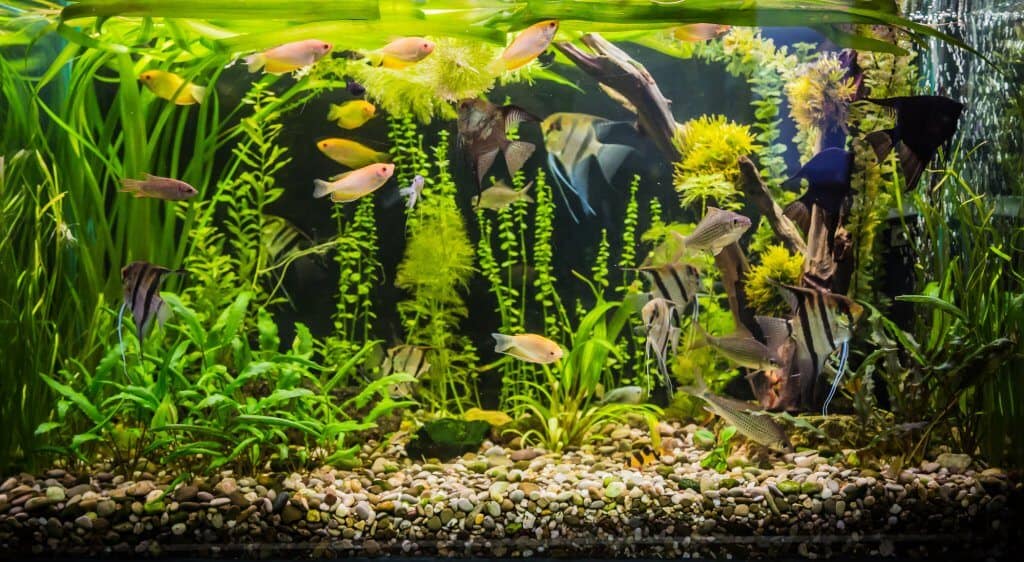
If you’re looking to get into breeding fish for a living, you know exactly where to start.
You have quite a few options to start you off on the right foot. It’s all about figuring out which fish you click with.
No matter which fish you choose to breed, we hope things go swimmingly and you end up with an abundance of eggs and fry.
Best of luck to you and your fish!
Which fish did you choose to breed?
Do you have any tips for setting up a breeding tank?
Leave us a comment down below.
We look forward to hearing from you.
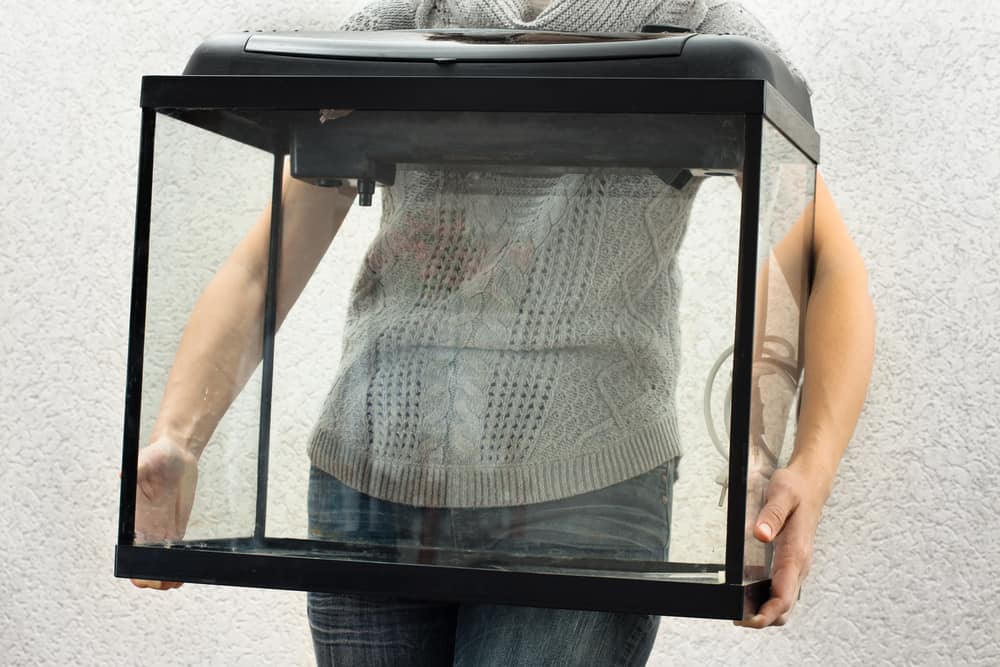

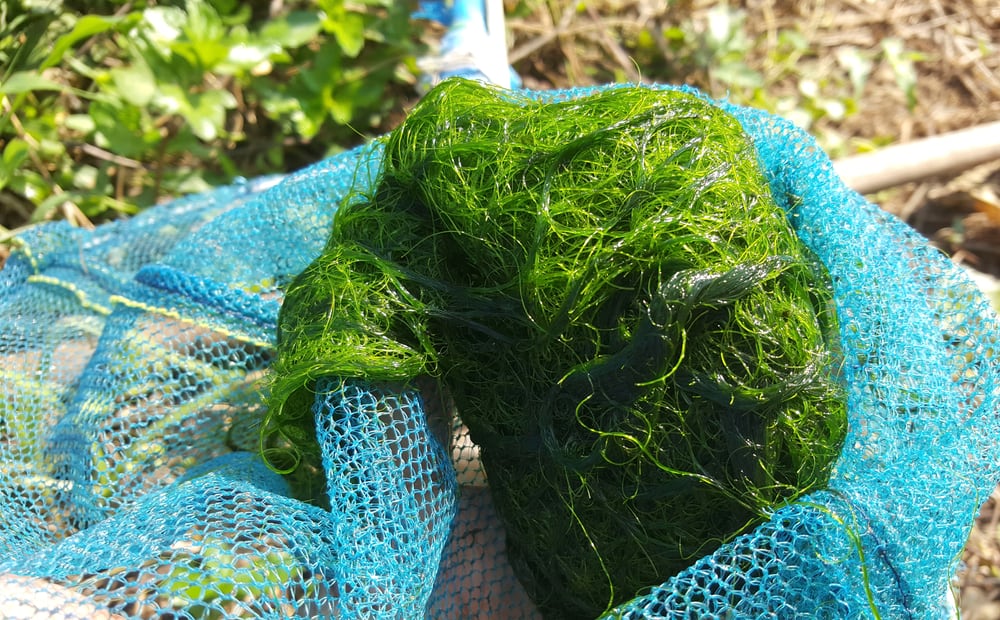
Leave a Reply
You must be logged in to post a comment.